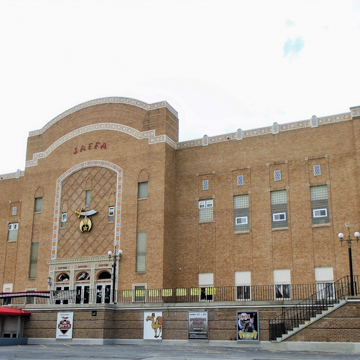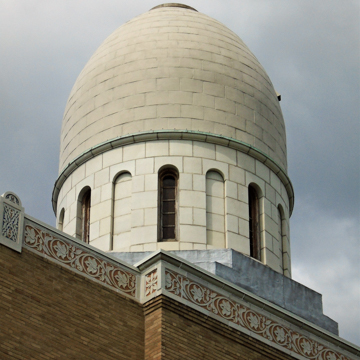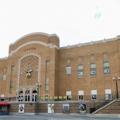Operated by the Shriners, this building looks like a golden brick Middle Eastern fortress, with circular towers topped by elongated domes similar to minarets at the corners. Instead, the building is a 3,400-seat auditorium and conference center. The eleven-acre complex occupies an entire city block in Altoona, enclosing an acre of space under one roof. The central entrance facing Broad Avenue is topped with diapered bricks surrounding a large curved scimitar, the symbol of the Shriners.
Frank Hersh, a member of the Jaffa Shrine, and Frederic Shollar were popular Altoona architects in practice between 1904 and 1930. In their design for the limestone-sheathed city hall (1925–1927) at 1301 12th Street, they employed a stripped-down classicism in a formal composition of elongated windows and arched entrances. A quartet of fluted columns supports the namestone above the 12th Street entrance, conveying the dignity appropriate for a civic building. Altoona architect David B. Albright earned a Preservation Pennsylvania award in 2002 for his renovation of the city hall's interior.






















